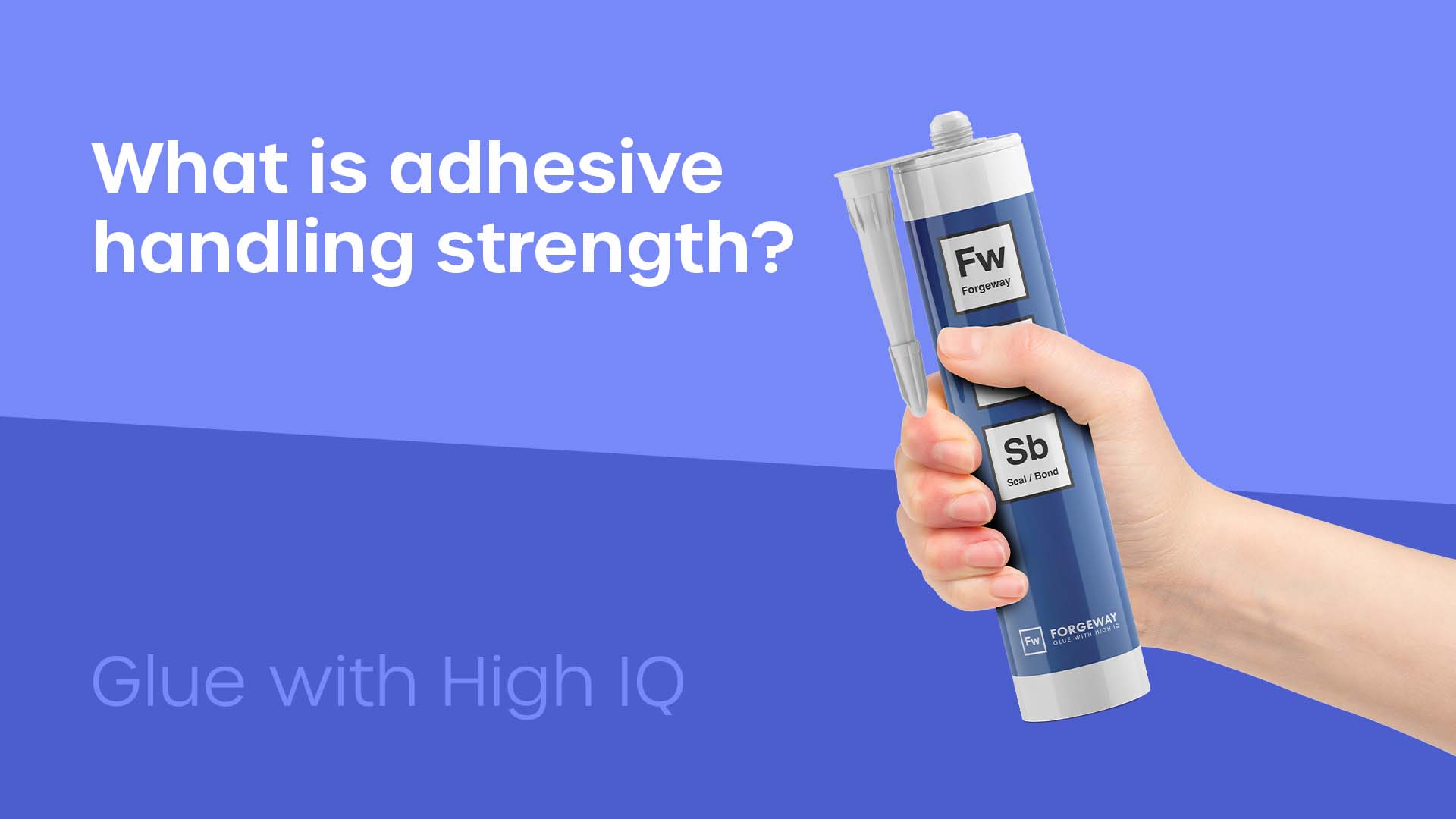Handling strength of an adhesive; What is it and how does it affect you?

You’ve heard the phrase ‘handling strength’. Now you want to learn what it means and why it’s important in an adhesive. It is a common expression that you will hear in relation to the cure time of an adhesive.
Here at Forgeway, we manufacture industrial adhesives. We often use the term ‘handling strength’ in relation to the performance of our adhesive products. We understand it is an important factor, particularly in the manufacturing industry.
This article will cover the definition of handling strength. Then, it will discuss why handling strength may be important to you. By the end of the article, you will know whether handling strength is important to you.
What does ‘handling strength’ mean?
When a structure reaches handling strength, it means you can put it to light use. It has enough strength to stay together when put under light strain. An adhesive reaches handling strength when it can withstand 0.3 MPa (or 45 PSI) of force.
So why does ‘handling strength’ come up a lot in relation to adhesives? Simply because adhesives will always have a period in which they cure. The cure time of the adhesive will play a part in how long it takes the structure to reach handling strength.

Understanding the difference between cure time and handling strength time
When people research an adhesive option, they will often look at the cure time of the adhesive. This is because they want to know how it will take before they can use the structure they are bonding.
The problem is, most people think the adhesive needs to be fully cured before they can put it into use. This isn’t the case, the glue doesn’t always need to fully cure before it reaches handling strength. The adhesive will usually reach handling strength more than twice as fast as it reaches full cure.
There is a further complication, the time the adhesive takes to reach handling strength will vary significantly depending on the structure you are bonding. For example, our Formoa 017FE product takes 3-4 hours to reach handling strength when bonding the boxes together on delivery vehicles. However, it can take more than 24 hours to reach a full cure.
If you were to bond something lighter, 017FE could reach handling strength in less than an hour.
In summary, understanding the difference between handling strength and full cure will give you an accurate representation of how long you have to wait before you can put the structure into light use.

When is a short handling strength time important?
So you know the difference between full cure and handling strength. Now it’s time to understand why you might need the adhesive to reach handling strength quickly.
Speed of production is an area of focus for most manufacturing companies. When manufacturing companies have a bonding process in their production, a slow-curing adhesive will hinder the throughput.
For example, if the delivery van manufacturer needed to wait 24 hours before the adhesive reached handling strength, it would significantly slow production.

Ultimately, you need to make sure that the adhesive’s cure time isn’t going to hinder production. But sometimes, you may have to put up with a long cure time to use an adhesive that meets other needs (such as strength or flexibility).
Choosing an adhesive that meets your needs
Now that you know why it’s important to have an adhesive which meets your needs in terms of reaching handling strength, you will need to assess whether you want to change your existing adhesive.
Here at Forgeway, we manufacture over 3000 tonnes of adhesive products annually. We know that you can easily adjust the formulation to speed up the adhesive cure. However, sometimes it’s better to look for an alternative option.
If you find that the adhesive product meets your other needs (like strength and flexibility) but still doesn’t reach handling strength quick enough, you can contact an adhesive manufacturer to see if they have a similar product with a faster cure time.
Alternatively, if you find that your current adhesive isn’t meeting other needs and doesn’t reach handling strength quick enough, you should look for an alternative adhesive product.
If you are still unsure about what you should do next, you can contact an adhesive specialist on our team for guidance.
Or, if you want to look at alternative adhesive options, have a read our article to help you decide on your next adhesive product. Click the button below to read the article.
Thomas is the Content Manager here at Forgeway. Thomas' job is to translate the technical jargon from the ivory tower of academia into easy-to-read content that everyone can understand. Forgeway's mission is to answer every question our customers and prospective clients ask, or are apprehensive to ask.
Topics:



